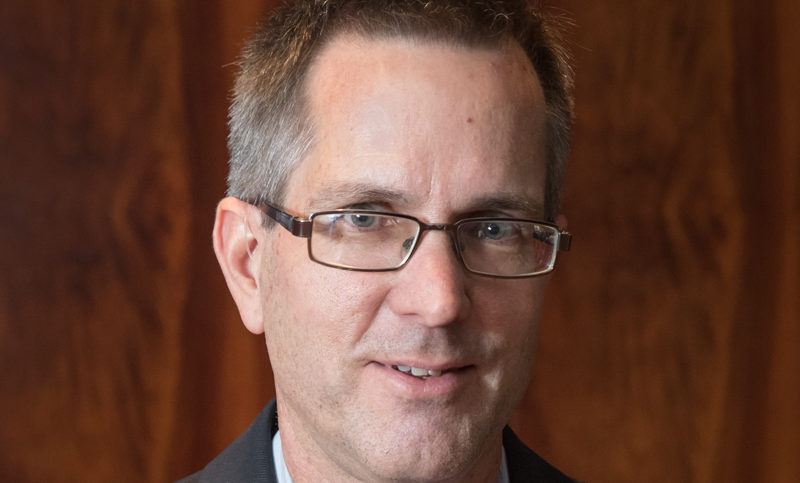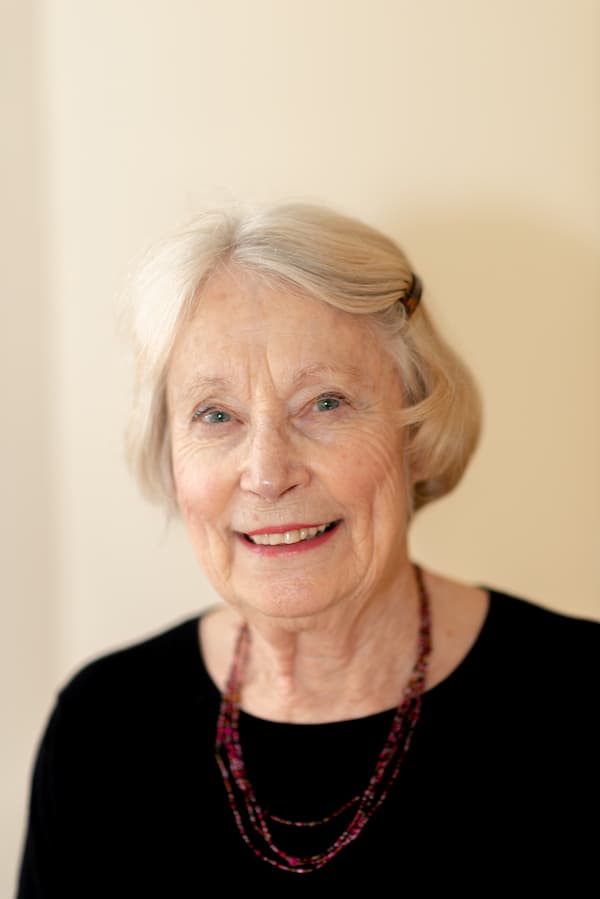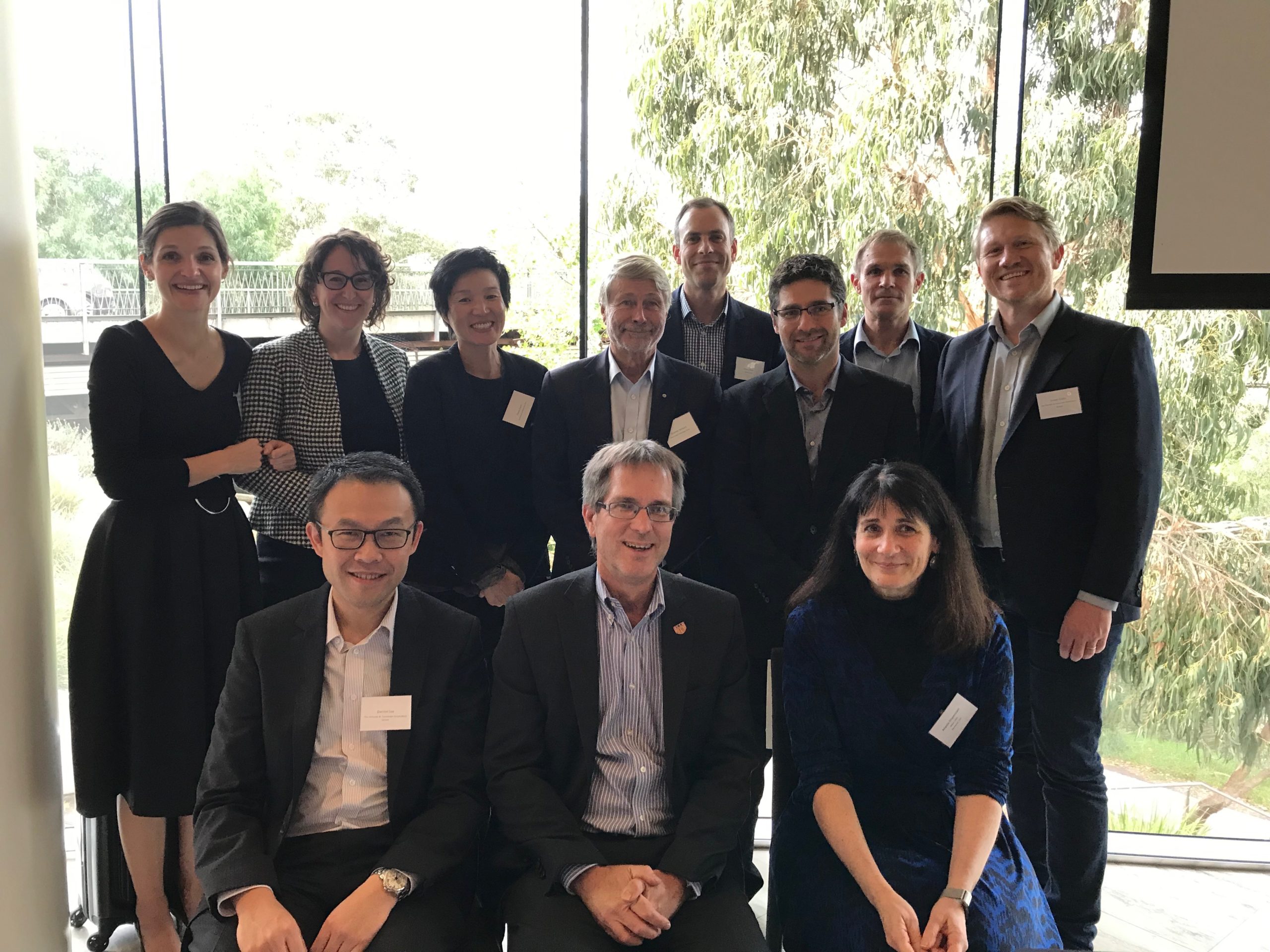Expert Series: A/Prof. Peter Mollee discusses issues around AL amyloidosis
Associate Professor Peter Mollee is a consultant haematologist in clinical and laboratory haematology at the Princess Alexandra Hospital (Brisbane), Associate Professor with the University of Queensland Medical School, and he chairs the Scientific Advisory Committee of the Australasian Leukaemia & Lymphoma Group (ALLG).

He describes AL amyloidosis as a rare disease where plasma cells in the bone marrow make an immunoglobulin light chain, which circulates in the blood. In AL amyloidosis, that light chain misfolds and deposits as amyloid in any of the body’s tissues, except the brain. It interferes with the function of the organ/s affected, leading to organ failure and ultimately, without treatment, to death.
This condition has a poor prognosis if diagnosed late. Late diagnosis still occurs because amyloidosis is uncommon and can present in an enormous number of ways and to numerous different types of doctors and specialists. In the past, there was a lack of effective treatment options, however, treatments and outcomes are now improving rapidly.
Almost nowhere in the world* is there a drug specifically approved for AL amyloidosis and, according to Associate Professor Peter Mollee, that’s a common problem for a lot of rare diseases.
“And the problem with amyloidosis is… it’s a rare disease,” he said.
“It’s tough to raise money and generate awareness for rare diseases. We don’t have a prime minister or film star who has it. It’s not highly visible in the media like breast cancer, heart attacks or kids with cancer. No one can spell amyloidosis, and very few people have heard of it!” explained A/Prof. Mollee.
Back in 2001, while on an overseas fellowship at the Princess Margaret Hospital in Toronto (Canada) A/Prof. Mollee was given a project, to write-up the hospital’s experience in transplanting amyloidosis patients.
“It was then that I became involved in the management of those patients and developed an interest in the disease,” he said.
Putting amyloidosis on the medical map in Australia
When A/Prof. Mollee returned to Australia, in 2003, he found there were no amyloidosis clinics or services here, no patient information, there were a lot of problems with diagnosis management, and there had never been an Australia-wide clinical trial for the disease.
“There was no coordinated approach, so there was a gaping hole in what was required. At the time, a group of Brisbane specialists interested in amyloidosis, together with social worker Ms Pat Neely, had already identified these issues and was working towards developing solutions. I just fitted in with their plans and slowly over the years the situation has improved,” said A/Prof. Mollee.
“Initially, the only philanthropic organisation that would help us was the Leukemia Foundation in Queensland, even though a lot of amyloid is not blood cancer. They were happy to take it on and provide some support, which was invaluable.
“The Leukaemia Foundation funded the first-ever amyloidosis clinical trial in Australia in 2005, and as there was no patient information in Australia at all, they helped us with the first patient information booklet.
“Pat Neely did a research project as part of that clinical trial, interviewing patients and carers, that led to the information in that booklet.
“We specifically found out what the issues for the patients and carers were, as opposed to medical professionals just writing what they thought was important.”
Gradually multi-disciplinary amyloidosis centres were established in the state capitals – in Brisbane, Sydney and Melbourne, and more recently, Perth.

“The amyloidosis centres have been invaluable because, with all the organs involved with amyloidosis, you need a multiplicity of specialists besides haematologists, particularly cardiologists and renal physicians, because those organs are so often affected, and neurologists as well,” said A/Prof. Mollee.
“We’ve done a lot of work in diagnosis with pathology. That was poor in Australia, and it’s still not optimal, but is improving all the time.
“And we’ve managed to bring a number of trials to Australia, and that’s been really beneficial.
“So there’s a big – well, big for a rare disease – body of activity going on behind us.
“Overall, things are really progressing, never as quickly as you would like, but definitely better than 20 years ago.”
Accessing treatments in AL amyloidosis
“There are a number of issues in Australia, and the main issue is that it’s often difficult to get the drugs you want,” said A/Prof. Mollee.
Despite bortezomib (Velcade®) showing improved response rates and overall survival in the ALLG MM13 trial, A/Prof. Mollee said the treatment was not yet approved for AL amyloidosis by the Therapeutics Goods Administration (TGA) or listed on the Pharmaceutical Benefits Scheme (PBS) for amyloidosis patients.
“So, we’ve got a great drug but it’s not specifically registered for patients with AL amyloidosis at this stage,” said A/Prof. Mollee.
“It’s a similar problem in most countries around the world - there is still no drug approved for amyloidosis, specifically.
In Australia, AL amyloidosis patients can only access bortezomib on the PBS if they also have a diagnosis of myeloma.
“Fortunately, a good proportion of amyloidosis patients in Australia would meet that definition of having myeloma, so they can access drugs on the PBS.”
But not all of them can though, and that’s a problem for those patients who don’t meet the definition of myeloma. It can be difficult for their doctors to get hold of bortezomib, unless they can access it through the hospitals, insurers, or by self-funding.
A/Prof. Mollee said that while there are various ways people with AL amyloidosis can access treatment, none was optimal.
“The main game in Australia, where we’ve got an egalitarian approach to healthcare, is to have bortezomib available to everyone, whether they’re rich or poor, whether they’ve got health insurance or not, no matter where they live; they should have access to this treatment.
“We need to get these agents listed, one, by the TGA to be registered for amyloidosis on the label, and two, to get them funded on the PBS.”
This applies to other drugs besides bortezomib. Many drugs that work well in myeloma also are effective in AL amyloidosis. While our access to PBS-funded drugs for myeloma is quite good, unfortunately it can be much more difficult to access such medicines for AL amyloidosis patients.
A/Prof. Mollee also noted that there is a small proportion of patients for whom it’s not appropriate to use bortezomib, “mostly because they’ve got severe nerve damage as part of their amyloid”.
“It can be dangerous to use bortezomib in such patients. That group aside, there’s also a small group of patients that would not receive initial chemotherapy but be taken straight to a transplant; that’s appropriate as well.
“Another issue in managing patients with AL amyloidosis is that, because of impaired organ function, many treatments can be difficult to tolerate. Patients often have significant heart or renal failure which can limit the type and dose of drugs that can be given. Supportive care to optimise organ function and quality of life becomes very important.”

Clinical trials in AL amyloidosis
The bortezomib-based regimen (cyclophosphamide, bortezomib, dexamethasone) forms the backbone of several clinical trials that have gone forward.
One such recent trial has examined the addition of an anti-CD38 antibody that is effective in myeloma, daratumumab, to the bortezomib-based regimen. Accrual for this trial closed recently in Australia and A/Prof. Mollee said the initial results, which have just been reported in Europe, “were very promising”.
The next trial for newly diagnosed patients which is planned to come to Australia will assess a new anti-fibril antibody called CAEL-101. This new antibody binds to amyloid deposits in the tissues in order to send a signal to the immune system to remove already deposited amyloid from the organs.
The trial plans to test whether the addition of CAEL-101 to bortezomib-based chemotherapy improves the outcome of patients with AL amyloidosis involving the heart.
“Another drug combination, which we hope soon will be trialled for amyloidosis, is isatuximab (a monoclonal antibody to CD38 that’s similar to daratumumab), and pomalidomide (an immunomodulatory drug) in relapsed and refractory amyloidosis. This trial offers a new promising combination treatment to patients whose amyloidosis has come back after initial therapy.
Amyloidosis incidence and prevalence
When asked, how many people in Australia have amyloidosis and of them, how many would have AL amyloidosis, A/Prof. Mollee’s response was, “we don’t know the exact answer”.
“We performed Australia’s first epidemiology study, which was published in 2019, using data from all the pathology laboratories in Queensland that do amyloidosis testing,” he said.
“Until then, we had no data in Australia about how common the disease was, and that’s very standard but essential information for any disease. This shows how far behind the goal posts we were on this disease – we didn’t even know how common amyloidosis was in Australia. That project took five years to complete.
“It’s quite time consuming to get all the ethics approvals and governance approvals necessary for that type of research, especially when it is mostly conducted in doctors’ spare time.”
Based on all the pathology reports that mentioned amyloidosis, the incidence of newly diagnosed amyloidosis is 12 patients per million people per year.
“Unfortunately, that study couldn’t tell us in depth information on the types of amyloid, but we looked at it indirectly and the incidence of AL amyloidosis is probably around eight per million per year. So, based on Australia’s population of 25 million, that’s about 200 new cases per year.”
And A/Prof. Mollee said there was another interesting aspect to amyloidosis.
“A complicating factor in assessing the incidence of all types of amyloidosis is that there is another type of amyloidosis, called transthyretin amyloidosis, that is currently vastly underdiagnosed and wouldn’t have been captured in our study.”
“Autopsy studies on older patients in the general population, aged 90-100, have found one-quarter of them to have amyloid deposits of transthyretin,” said A/Prof. Mollee.
“Those deposits are not enough to cause disease, such as heart failure, but these studies do show how extraordinarily common amyloid deposition is.
“That type of amyloid [transthyretin], typically causes heart problems in older men. In the past, it just hasn’t been diagnosed because doctors tended to not investigate 80-year-olds who get a bit short of breath or have a thick heart on scans. That is all changing now as effective treatments become available.”
A/Prof. Mollee said there were probably thousands of cases in Australia that are undiagnosed, and that transthyretin amyloidosis will become the most common cause of any amyloidosis by far.
“That’s a separate form of amyloidosis and a different issue from AL amyloidosis, but it makes it hard to answer the question about how common amyloidosis is.”
A/Prof. Mollee said there was no prevalence data because there’s no amyloidosis registry in Australia. Amyloidosis is an uncommon disease, but it’s not a notifiable disease like cancer, so we have no good data source to answer such questions.
Long-term survivorship
“Having said that, we’ve got a number of patients with AL amyloidosis who have been treated and their amyloid hasn’t come back. There are long-term survivors and some of them have no evidence of the disease,” said A/Prof. Mollee.
“We’ve seen patients whose organ functions returned completely to normal and, at least on the tests we’ve got available, their organs look normal.”
Read Fahimeh Taheri’s story – she’s been in remission for seven years
AL amyloidosis – blood cancer or blood disorder?
Whether AL amyloidosis is a blood cancer or a blood disorder, A/Prof. Mollee said, “that’s a difficult question in the field of amyloidosis”.
“This partly comes back to, what is cancer? You think that is a straightforward thing, but it’s not.
“When does a disease go from a pre-cancerous position to a benign cancer, to a malignant cancer? These are concepts that are not straightforward to researchers in the field.
“And it’s very difficult to explain those concepts to the public and patients.
Most patients with AL amyloidosis have an underlying bone marrow condition called ‘MGUS’ which is a monoclonal proliferation of plasma cells and which is generally considered a premalignant condition. MGUS can progress to myeloma in a small percentage of cases.
As such, most patients with AL amyloidosis don’t have what most people think of as cancer in their bone marrow. On the other hand, most drugs on the PBS are only available for patients who have the blood cancer, myeloma. In this regard, it can be an advantage for AL amyloidosis to be considered a blood cancer because accessing treatments becomes easier if you have a diagnosis of myeloma.
“So, it’s caught up in semantics and terminology. AL amyloidosis is definitely a blood disease. It’s closely related to myeloma. Calling it a cancer causes trouble. Not calling it a cancer causes trouble. It’s hard to know what the right thing to say is,” said A/Prof. Mollee.
* Bortezomib is approved for AL amyloidosis in New Zealand.
Last updated on January 3rd, 2023
Developed by the Leukaemia Foundation in consultation with people living with a blood cancer, Leukaemia Foundation support staff, haematology nursing staff and/or Australian clinical haematologists. This content is provided for information purposes only and we urge you to always seek advice from a registered health care professional for diagnosis, treatment and answers to your medical questions, including the suitability of a particular therapy, service, product or treatment in your circumstances. The Leukaemia Foundation shall not bear any liability for any person relying on the materials contained on this website.